Mark Sisson's Blog, page 285
October 2, 2014
How to Deal with Health “Noise”
 Among the most important truths I’ve come to believe over time is the need to be selective in life. Selective with relationships. Selective with experiences. Selective with purchases. Selective with information. Selective with messages (whether they come from outside sources or, on occasion, my own head). Like it or not, we have limited time and energy in a day – and in a life. While some people respond to this fact with frantic scurrying or a miserly parsing out of minutes, I’ve found the best approach for me is to winnow what I want or need to give attention to what’s most important. It’s part spirit of simplicity and part defense of sanity, particularly when you consider the deluge of bad news and marketing distraction that would snatch up every waking moment. Yet, it’s also more than that – Primally speaking. To maintain and enjoy my Primal lifestyle, I appreciate being able to live it with as much peace, space and clarity as I can. The more I can reduce the static – those extraneous and contradictory messages – regarding health matters, the more effortlessly and clearly I can tune into the programming I want to embrace in life. But what does that process look like, and how do I apply it? To be fair, what’s the difference between a selective and discerning perspective and just a closed mind? Let’s take this apart.
Among the most important truths I’ve come to believe over time is the need to be selective in life. Selective with relationships. Selective with experiences. Selective with purchases. Selective with information. Selective with messages (whether they come from outside sources or, on occasion, my own head). Like it or not, we have limited time and energy in a day – and in a life. While some people respond to this fact with frantic scurrying or a miserly parsing out of minutes, I’ve found the best approach for me is to winnow what I want or need to give attention to what’s most important. It’s part spirit of simplicity and part defense of sanity, particularly when you consider the deluge of bad news and marketing distraction that would snatch up every waking moment. Yet, it’s also more than that – Primally speaking. To maintain and enjoy my Primal lifestyle, I appreciate being able to live it with as much peace, space and clarity as I can. The more I can reduce the static – those extraneous and contradictory messages – regarding health matters, the more effortlessly and clearly I can tune into the programming I want to embrace in life. But what does that process look like, and how do I apply it? To be fair, what’s the difference between a selective and discerning perspective and just a closed mind? Let’s take this apart.
The fact is, pursuing a life of genuine health and well-being requires a steady mind – especially in the world of 24-hour news programming and the talking head culture that it’s spawned. Not only do we fend off the chicken littles that make a monumental crisis out of every molehill, but we can get quickly swept off course with every contradictory headline, sidetracked by questions or findings that are founded in nothing but a punched-up talking point. Even aside from the media circus, there’s the everyday path of casual conversation and inevitable observations as I navigate the regular world. The potentially diverting influences are there, too – everything from the well-meaning warning about bacon fat shared by some random acquaintance to the blogosphere discussions about the latest diet book in which everyone is sharing their opinion, from the latest critique of paleo to the restaurant menus or conference buffets that could seal me off in a corner of eccentric limitation if I let them. I could devote mental bandwidth to these events, but why?
Harvard researcher and writer Shawn Achor picks up on the selective imperative in his book Before Happiness: The 5 Hidden Keys to Achieving Success, Spreading Happiness and Sustaining Positive Change. Among his suggested five skills is “noise canceling,” the premise being that we we’re bombarded by stimuli and messages that not only absorb our time and mental energy but that hamper our attunement to the inputs that can further our goals. In essence, we want free space for clear reception rather than the draining intake of busy static.
Achor specifically defines four criteria to use for identifying the unimportance of much information we encounter in a day: unusable for behavior change, untimely for choices you’re going to make in the short-term, hypothetical in nature and distracting from your personal goals.
Let that sink in for a minute. Think about how long you’ve been living Primally and what it took to get here. If you’re still “in process,” think about what these criteria mean for you right now. Assess what you’re exposed to in a given day – what you choose to read, notice, hear, discuss. How much do those criteria apply to the health, diet, recipe, exercise, well-being, stress or lifestyle information that you pick up on in any part of a given day? How has that answer changed for you in the last year? Would you like to see it shift further? Where do you feel extraneous input still taking up space? What sources does it come from?
Pulling back from external influences, what goes on in your own mind that distracts you from the change you want to make? Have you made peace with embracing an approach that requires different choices around certain conventional activities, or does that conflict or small trail of daily frustrations impose its own emotional noise?
Finally, while we can certainly choose to be selective about our media exposure (e.g. what magazines we subscribe to, what sources we read online, what we keep in our Facebook feed) and in the “live” world choose to not join every argument we’re invited to, I think there’s something else that is especially pertinent to health and living outside the noise – something I hear a lot about from people who write me. So often we get get caught up in amassing information about a particular health path. Sure, some people are rabid collectors of information. Their obsession for accumulating knowledge and strategies and resources often hampers their genuine action. Aside from this more extreme display, however, I think many of us at times loiter comfortably in the sidelines of learning and reading more. While I’m all for becoming informed, I believe we can easily miss the central point if we can’t rein in our informational and even conversational intake. Sometimes the “noise” we need to cut out is our own thinking that we don’t know enough yet, that we’re not ready to begin yet, that something is still missing.
If we think of the opposite of “noise” as space, we can see that the space is ours to fill – with self-experimentation, with self-study, with play – playing at being Primal in this way or that. Do we allow ourselves that amount of attention – and freedom? We can earnestly attempt to set up the perfect circumstances, cover all our bases, subtract out other distractions, but the most potent and radical thing we can do to cancel out the extraneous is to make no emotional or logistical room for it – to start living – and keep expanding. The best answer for tuning out the “noise” may be to be boisterous enough living as Primally as we can today.
Thanks for reading, everyone. What do you think of the “noise” concept? Has going Primal made you read or live more selectively – or boisterously, for that matter? Have a great end to your week.





October 1, 2014
16 Ways Green Space Improves Your Life
 Most people like being surrounded by nature. Even if it’s just a walk through a suburban city park or puttering about in a backyard garden, we’re drawn to green spaces filled with grass, trees, and leafy vegetation. They make us feel better. But the way we describe the effects of green space is all very amorphous and abstract and general, isn’t it? We “feel good” sitting on the grass. “It’s nice” to take a walk along a forest path. The office “doesn’t feel right” without a potted plant on the desk. Those sorts of benefits are great on a subjective level for the people experiencing them, but they aren’t very persuasive to others. If you want your ambivalent spouse to help grow the big garden you’ve always wanted, or your skeptical friends to start going on hikes with you, more specific and measurable reasons might be just the ticket.
Most people like being surrounded by nature. Even if it’s just a walk through a suburban city park or puttering about in a backyard garden, we’re drawn to green spaces filled with grass, trees, and leafy vegetation. They make us feel better. But the way we describe the effects of green space is all very amorphous and abstract and general, isn’t it? We “feel good” sitting on the grass. “It’s nice” to take a walk along a forest path. The office “doesn’t feel right” without a potted plant on the desk. Those sorts of benefits are great on a subjective level for the people experiencing them, but they aren’t very persuasive to others. If you want your ambivalent spouse to help grow the big garden you’ve always wanted, or your skeptical friends to start going on hikes with you, more specific and measurable reasons might be just the ticket.
So let’s dig deeper. Let’s explore the specific ways in which green spaces improve our lives:
Green spaces improve immune function.
A Japanese therapy called “forest bathing” involves spending deliberate time in nature (usually forests, hence the name) and actually boosts immune function. Natural killer cells are critical for proper function of the innate immune system; one of their most important functions is to eliminate tumors. And just a single day trip to a forest park can increase NK cell number and activity, as well as upregulate anti-cancer proteins, for up to a full week. In every forest bathing study, in fact, participants enjoy this increased natural killer cell (NK cell) activity and anti-cancer protein function.
Green spaces reduce stress.
If I’m ever stressed out and nothing’s helping, I’ll head out to the hills for a quick hike. Not a long one, not a grueling one. Just a quick jaunt to nature. Almost invariably, it works. I’m able to reset my stress response, get a handle on my sympathetic nervous system, and calmly address the source of the stress. So it’s no surprise that neighborhood green spaces are associated with healthier cortisol levels in deprived urban communities in Scotland and forest bathing therapy has been used to lower cortisol levels.
Green spaces improve mental health.
We tend to focus on physical health, but mental health (which isn’t really separate from physical health) is arguably more reliant on regular exposure to green space. Among both rural and urban Wisconsin residents, high levels of neighborhood green space were consistently linked to lower levels of anxiety, depression, and stress. And in case you’re thinking of moving, consider that people who move to “greener” urban neighborhoods enjoy improved mental health in the subsequent years than people who move to “less green” urban areas.
Green spaces lower blood pressure.
A week-long evergreen forest retreat reduced hypertension in elderly Japanese, while a control group taking a similar retreat in the city experienced no benefits to blood pressure. Heck, even in 10 year old kids living in urban areas, low levels of nearby green space were associated with higher blood pressure. No one’s blood pressure is immune to the lack of green space, and kids might even be more susceptible.
Green spaces reduce mortality.
Now, this could very well merely be a correlation. But the presence of green space is fairly often linked to reductions in all-cause and stroke mortality. In a cohort of 575,000 urban Ontario residents aged 35 and older, for example, living near greenery reduced mortality. Same for ischemic stroke survivors and North Floridians.
Green spaces improve healthy longevity.
In a recent study out of the Netherlands, proximity to urban green space was associated with improvements in both longevity and healthy longevity. So not only were people living longer, they were living longer and more healthfully: compression of morbidity. Controlling for income level did not alter the effect.
Green spaces promote physical activity and exercise by making it more enjoyable.
People enjoy working out in nature. They prefer to walk through a park to along a boring suburban street. They’d rather hike than slog on a treadmill. Tabata kettlebell swings are somehow more tolerable when done in fresh air with trees overhead and grass underfoot. The closer you are to a green space, the more likely you are to be physically active. Better still, green spaces promote the precise type of physical activity we so desperately lack these days: walking.
Green spaces also improve the mental and psychological benefits of physical activity and exercise.
Exercise isn’t just good for the body, but also the mind; we often forget this. A 2011 meta-analysis broke down the psychological benefits of outdoor workouts. Compared to indoor workouts, outdoor workouts resulted in greater revitalization, increased energy, and more positive engagement, along with less depression, anger, confusion, and tension.
Green spaces-related health improvements cannot be completely explained by increased physical activity.
That’s an attractive assumption to make, but even though physical activity is consistently higher in greener neighborhoods, adjusting for this only slightly attenuates the relationship between green space and health. It’s not just the physical activity. It’s not even mostly the physical activity.
Green spaces reduce blood sugar.
Diabetics who go on forest bathing trips enjoy lower blood sugar and improved HbA1c. And in Australians, living near green space was independently associated with a lower risk of type 2 diabetes. Not even controlling for demographics, income level, diet, activity level, culture, or health eliminated the link.
Green spaces improve sleep.
When you go camping, your sleep typically improves and instead of staying up past midnight, you might find yourself nodding off shortly after dark and waking up refreshed like never before. According to the conventional Primal explanation, the lack of artificial lighting is allowing your natural circadian rhythm to dictate your sleep habits. That’s certainly a huge part of it, but what if the presence of green vegetation is also playing a role? A recent study found evidence of such an effect, with urban dwellers living near green spaces reporting healthier sleep habits.
Green spaces make us more productive.
Exposure to green space engages our involuntary attention, the kind of soft focus where we’re seeing, hearing, and smelling sensory data without devoting huge amounts of brain power to it. This restores our voluntary attention, the kind of hard focus we require to concentrate on work-related tasks and be productive. Even brief exposure to pictures of nature scenes restores our attentional capacity – our ability to concentrate on a given task without deviating or becoming sidetracked.
Green space is especially important for children.
Kids already know it. You set one down in a forest or park and they know exactly what to do. They’re running, jumping, climbing trees, digging for bugs, getting dirty, collecting leaves, inventing games, and sporting the biggest smiles you’ll ever see. So that’s reason enough to give children ample and regular (daily) access to green space. But there are also proven, measurable physiological and mental benefits for them, including: increased test scores in “nature-smart” kids; enhanced learning when curriculum is nature-based; reduced impact of ADHD; enhancement of self-discipline and self-control; improved cognitive function and concentration; and stress amelioration in highly-stressed kids. Kids with poor access to outdoor space are also more likely to have behavior problems. Powerful stuff, eh?
Green spaces produce healthier babies.
I’m not talking about human infants spawning from the roots of an old oak tree like something out of Celtic folklore. I refer to the findings of a recent study from Vancouver (hat tip to reader Wenchypoo for alerting me to it). Pregnant women in neighborhoods with ample amounts of grass, trees, and leafy vegetation gave birth to healthier babies than women in neighborhoods with less greenery. Even after researchers controlled for variables that also affect health at birth like neighborhood walkability, air and noise pollution, and income level, the association held firm. This study doesn’t confirm causality, but it’s certainly suggestive. And another study supports it, finding that urban green space was linked to lower rates of neonatal mortality.
Green spaces reduce air pollution.
This is a huge one that might explain the previous benefit to pregnant mothers and their babies. Grass, trees, and plants of all kinds reduce air pollution, so when you live in an area with ample green space – even an urban environment generating lots of pollution – you can breathe easier. In one recent study, researchers found that the more green space in and around a pregnant woman’s home, the lower her exposure to and inhalation of airborne pollution particulates.
Green space-related health improvements usually require visiting the space.
While a lot of the benefits of green space are passive – you can just “be” and accrue positive effects to your health and well-being simply by being near vegetative growth – the active pursuit of experiences in nature provides further benefits. For instance, one study found that the mental health benefits associated with green space exposure were more evident in adults who were physically active in those spaces. Having a great park near your house doesn’t do much for you if you never walk through it.
So, how does this all happen? What’s so great about green space? I’ll give my little pet theory. See what you think about it.
We often forget that plants are alive. I mean, we cursorily acknowledge that they’re living, that they take in nutrients and grow and die, but we mostly think of them as passive, inanimate objects. Emerging evidence shows that plants are much more than that. They react to their surroundings. They communicate with each other using volatile airborne compounds to discuss incoming attacks from herbivores. They can “hear.” They sense gravity, and when an object is in the path of their growth can change that path to go around. They feel a sort of pain. They wield a sort of intelligence. Is it the same kind as human pain or human intelligence? No, but it’s there. They don’t have to be Tolkienesque Ents to have agency.
My wild guess is that humans can subconsciously eavesdrop on plant communication. We already know that humans can pick up on a tomato plant’s nutrient content by “listening to” its flavor-related volatile compounds. And when we’re exposed to the airborne phytoncides (wood essential oils/volatile compounds) released by trees, we enjoy increased immune function and lower stress. If you’ve ever walked through the rain forests of Washington state, for example, or the jungles of Thailand, you’ll know what I mean: you feel it. The place is alive and full of conversation. It’s in another language, and like visiting a busy marketplace in another country, you can’t quite make out the specifics, but you get the gist of what’s going on and you’re glad to have witnessed it.
That plant speak, those volatile airborne compounds, that’s a cue for our bodies. It’s the signal that we’re home, in good hands, in a good place amongst the greenery.
I know what a lot of you are thinking: correlation doesn’t necessarily equal causation. That’s true, and I’ve certainly said the same thing many times over on this blog. But there’s a difference with green space. Giving up red meat based on some correlative evidence is risky because red meat is a highly nutritious food, and besides, there’s lots of counter-evidence showing how healthy it can be. Exposing yourself to green spaces, taking walks in the park, going for hikes in the forest, planning a camping trip – these aren’t risky. These are fun activities and behaviors that you were probably going to do anyway. Even if there weren’t any established health benefits to green space, I’d still go for weekly hikes. I’d still camp with my family. I’d still go snowboarding every winter. I’d still walk barefoot in the cool dewy grass in my yard every morning.
Wouldn’t you?
What about you? How do you currently (or plan to) incorporate green spaces into your life?
Thanks for reading, all.
Prefer listening to reading? Get an audio recording of this blog post, and subscribe to the Primal Blueprint Podcast on iTunes for instant access to all past, present and future episodes here.





September 30, 2014
We Are Family: PrimalCon Oxnard 2014
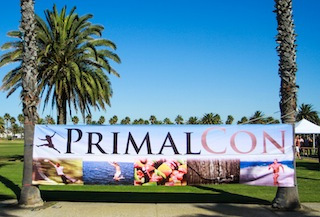 Oh, man. What a weekend!
Oh, man. What a weekend!
It’s the Monday after PrimalCon Oxnard, and I’m still trying to process it all.
Let’s set the scene for those who don’t know: Mandalay Beach Resort, Oxnard, CA. Nestled right on the coast between Malibu and Santa Barbara, this sleepy little resort hovers at a perfect 72-75 ºF through September, even as the inland valleys bake in the lingering summer heat. Sand dunes shield you from coastal winds. Nights are comfortably cool. The clear blue sea is 66 degrees, refreshing without being uncomfortable. The resort itself is recently remodeled, fusing luxurious refinement with beach culture. And of course, our barefooted band of joyful Groks and Grokettes took the place over, earning flabbergasted stares which gave way to envy and curiosity.
The event kicked off on Thursday night with a welcome gathering and dinner banquet after a day of travel. Not that this chatty group needed one, but we did play a fun ice breaker game where registrants wrote interesting and unusual facts about themselves on notecards, then had to seek out and find the individuals who made the statements on their card. Players were instructed to venture away from “Primal-obvious” type answers (since “I love bacon and dark chocolate!” and “I love hiking in Vibram FiveFingers!” could have literally been applied to anyone in the room) and get a little wild. Some of my favorites: “I won $1,000 in a Dirty Dancing contest in 1986″; “I’m afraid of wet black hair”; “I grew from 5’5″ to 6’1″ in a single year” (from Julian Depeyrot, whose parents Krista and Philippe had such a great time at PrimalCon New York they brought their teenager out to Oxnard; don’t worry, he didn’t see anything too incriminating); and finally, “I was suspended from an all-girls high school for wrapping the nun’s bathroom toilet with Saran wrap so when they sat down they’d wet themselves….” (Come to think of it, someone was swiping sheets of plastic wrap all weekend from the kitchen station). I’m always amazed and delighted at the ubiquity of human strangeness, and the ice breaker game made that very obvious.
Dinner was graciously provided by the Mandalay Beach Resort. Actually, scratch that. We provided the food, the ingredients (lots of butter and good fats, no nasty processed oils), the recipes, and the expert chefs at the resort did the cooking – and did an excellent job bringing our Primal vision to life. Roasted tenderloin, asparagus riding the razor’s edge between crispy and tender like only perfectly cooked asparagus can, chicken in a rich cream sauce, whipped ginger cinnamon sweet potatoes, sautéed baby kale, and a half dozen other dishes filled our bellies and fueled boisterous dinner conversation all weekend.
Friday morning rolled around and PrimalCon was officially on! The presenters, attendees, and staff all gathered at Oxnard Beach Park, a popular spot directly adjacent to the resort. Acres and acres of lush green grass set the stage for the fun and games and adventures to come.
We had the ever-addictive slacklines set up. I think about two dozen people probably hopped on Amazon to order them as soon as they got home.
We had PrimalCon favorites Adam and Vanessa Lambert leading attendees through gymnastics, weight lifting, and mobility sessions (yeah, they pretty much do it all).
We had San Diego strongman Brian Tabor gracing us with his goofy humor, ridiculous strength, even more ridiculous knowledge set, and a knack for helping people realize and unlock their ability to lift heavy and oddly-shaped things (and carry them). Oh, he’s also got a really fantastic cat shirt and low top Chuck Taylors in every single color.
How to describe Darryl Edwards for the uninitiated? Words don’t really suffice. Adjectives? Nah. Joules might be more accurate, because the dude is the living manifestation of pure kinetic energy. From morning until night, Darryl is in play mode, making it his life’s work to get everyone – and I do mean EVERYONE – playing, laughing, and generally having the time of their lives as they have the workout of their lives without even realizing they’re working out. The guy gets IT. If I had to nitpick, it’s that he prefers his burgers well-done. But hey, nobody’s perfect.
Chef Rachel Albert, a longtime PrimalCon presenter, did things a little different than usual. Instead of treating us to a master cooking demonstration as she’s done in years past, she bared her soul to us: she recounted her successful three year battle with stage 4 cancer using a mix of alternative and conventional methods, including a very low carb, high fat ketogenic diet using Primal principles. In a sense, her story perfectly captures the ultimate purpose of Primal – to utilize both evolutionary health and modern medicine in the pursuit of optimal health and happiness. Everyone was touched by her journey. Either that or someone was slicing up a big pile of onions in the ballroom. I can’t express just how happy it made me to see Rachel doing so, so well. She’s got big plans ahead, and I look forward to hearing more.
Friday was also my keynote. I focused on a simple but powerful concept that seemed to reverberate through the weekend: the minimum effective dose. Whether it’s the amount of glucose we consume, exercise we do, or sun we take in, the foundation of successful PB living is to be as happy, healthy, lean, fit, strong, and productive with the least amount of pain, suffering and sacrifice as possible. We want to eat only as much glucose as we need to fuel our activity and replenish our glycogen. We want to only do as much exercise as we need to build muscle, strengthen bone and joints, and promote good health and fitness. And we want to stay in the sun just long enough to maximize vitamin D production (and maybe build a base tan); we don’t want to get so much sun that we’re so burnt we can’t go outside for two weeks. The minimum effective dose lets us live to fight and play and love and experience another day.
This time my partner in crime, Brad Kearns, stepped away from exclusively running the show to finally fulfill his lifelong dream to become a PrimalCon Oxnard presenter. He taught running and sprinting to an enraptured audience, using his unique blend of off-the-cuff humor and training know-how (did you know he was an elite, world-class triathlete, sprinter, and high jumper?) to leave attendees in stitches. I didn’t know you could laugh and sprint at the same time, but apparently Brad can make it happen. Oh, and don’t get me wrong: he still ran the show, he just let others do a little more of the work. The guy must have put in about 30,000 steps a day, minimum.
Another cool thing was the incredible transitions taking place. You had Leslie Klenke, who went from PrimalCon attendee to Primal Blueprint Publishing author (of Paleo Girl) and PrimalCon presenter. You had Alessandra Wall, who came to PrimalCon Lake Tahoe an eager attendee and showed up to Oxnard a seasoned expert discussing the psychological aspects of eating and living healthfully to jam-packed groups. Or how about inquisitive and joyful Harish, who lost so much weight (90 lbs) between Tahoe and Oxnard that I barely recognized him? Or Larry, who lost over 100 pounds (and counting) and transformed his life in the process?
We did the Primal ocean plunge, of course, followed by a madcap sprint back to the jacuzzi where we tripled the maximum capacity until the security guard had to ask us nicely to disperse. But that was okay because it was time to eat!
One of the highlights unique to the Oxnard event is the annual Survivor Team Challenge. Six groups of around a dozen teammates tackle three full pages of challenges requiring a mix of brute strength, strategic thinking, physical endurance, planning, communication, delegation, logic, and a willingness to handle slimy seaweed and talk to strangers. Page one of the challenge sheet says teams can’t even start the game until you follow a chain of clues to find a hidden treasure somewhere in the park. Well, our first three teams were so gung ho that the entire pack of three-dozen players immediately hit the deck to tally up the required 300 pushups per team! Mercifully, the organizers let them proceed only for a bit before reminding everyone that their physical efforts wouldn’t count toward the total until they presented the first hidden treasure to the judges… After scavenger hunting, pullup and squat competitions, brain teasers, photo challenges, and some truly off-the-wall tasks, the Survivor Team Challenge left participants physically and mentally exhausted and requiring ample amounts of delicious Primal fare and restorative movement and massage sessions.
Luckily, lunch was right around the corner and our expert presenter roster was stacked with body working, ailment soothing, movement assessing rockstars. Between VitaMoves creator and bodywork wizard Angelo dela Cruz, massage specialist and movement assessment expert Tracy Barksdale, physical therapist and holistic injury treatment artist Tommy Brice, and the dynamic duo Dr. Dawn and Coach Kimmie – two lacrosse ball-based prehab/rehab/movement experts with a penchant for hilarious sexual innuendo – any attendee with sore, tight, or overworked body parts were well taken care of.
And lunch! Oh man, what a spread we had each day. Grass-fed burgers, plantain chips, mixed baby greens with pomegranate and a simple vinaigrette, coconut butter, cacao nibs, mac nuts, 2 year aged grass-fed cheddar, nut butters… Bob Montgomery, founder and proprietor of San Diego’s Not So Fast! – the first (and in my not so humble opinion, best) paleo/Primal food truck in California – once again handled lunch for us each day. The dude worked hard, mixing enough of his secret ground beef burger recipe up to feed 150 starving people and dropping choice quotes like “I don’t feel right if I’m not elbow deep in grass-fed beef at least once a day.” If that doesn’t give you an idea of the sort of love and passion Bob brings to the delicious lunches at PrimalCon, I don’t know what will.
I was also very pleased to have my entire family with me at the event for the first time. My wife Carrie and her friend Karen led group sessions, my daughter Devyn participated throughout the weekend, and my son Kyle showed up to do battle in Ultimate Frisbee. There’s nothing like family, especially when you get to share them with your extended Primal family.
Speaking of which, the Ultimate Frisbee matches – secretly my favorite part of the weekend, or couldn’t you tell? – were indeed battles. We fought hard and emerged victorious in the first match. In the second game, Kyle’s team came from 4 points down to tie the game at 9 apiece. I was a nice guy and let him have the benefit of the doubt on a questionable play, and they ended up winning. Sometimes you just gotta let the kids win one, you know?
The ongoing feud for perfect PrimalCon attendance between everyone’s favorite camp counselors, Tina Leaman and Chris Adams, and everyone’s favorite ninja, Angelo, continued apace. They’re both sitting at 9 for 9. If I’m being honest, I hope no one comes out on top.
We had a Primal pig! Jennifer was so kind as to pasture-raise a pig just for our Saturday night luau. Apparently the pig didn’t listen to my keynote, because in the early afternoon it decided to roll off the spit directly onto the coals to receive far more than the minimum effective dose of heat needed to cook it. Thanks to the quick thinking of our pork-starved staff, however, we rescued the 120 pounds pig before any real damage was done. As it cooked for hours and hours, we all had to suffer as the smell grew more and more appetizing.
Luckily, it paid off. It tasted even better than it smelled, especially combined with the tropical mango salsa. We had our Saturday luau out at the park, sipping wine, nibbling dark chocolate from Santa Barbara Chocolate and Primal dark chocolate from Eating Evolved (yep, we had two sources of dark chocolate to choose from, both incredible!), and sipping wine while nibbling dark chocolate (what, you haven’t tried that combo?) as the sun dipped below the horizon.
By Sunday, everyone was extremely-well exerted and had logged in many hours in the sun. That’s why Katy Bowman’s presentation on the importance of basic everyday movement and variation on Sunday morning had a wonderful balancing effect. Having just flown in from her hectic worldwide book tour Saturday night (and having walked 5.5 miles that morning from a friend’s crash pad to the beach park to arrive by 8am!), she brought some fresh energy and an interesting perspective that a life of movement and variation is the key to health (especially in the workplace…stay tuned for our joint project called Don’t Just Sit There). From Katy’s perspective, formal workouts–while obviously delivering performance and health benefits when done sensibly–is actually just “junk food” in comparison to the dense nutritional benefit we get from cultivating a daily lifestyle of consistent movement done throughout the day. The audience was relaxing on the grass for this presentation, but she made sure everyone changed positions every so often throughout the presentation! Thought provoking stuff to be sure, especially to a group of people seemingly smitten with the numerous workouts they’d completed the previous two days.
You ever have a great big dinner party with all your favorite people eating great food, conversation streams crisscrossing the room, story snippets and laughs, the beautiful cacophony – and then it all comes to a halt and you’re left with palpable silence that’s almost deafening and a bunch of dirty dishes? Yeah, it’s kinda sad.
But that’s just momentary. And necessary. Without sadness, there is no happiness. It’s just an emotion, a natural response of the mind to the cessation of inordinately good times. So what I do in these situations is move on to reflect on the weekend. This happens every dang PrimalCon, like clockwork. It’s part of my process.
If all this sounds like a good time – and believe me, it is – start making plans for next year’s PrimalCon Oxnard. It’s happening around the same time next year and it is going to be even better. We’re pulling out all the stops to make it the very best and biggest PrimalCon yet, so stay tuned for details.
You know what? I just figured out where the minimum effective dose concept does not apply:
In love, and laughter, and friendship, and community. You want as much of that as you can get, and PrimalCon is overflowing with it.
Thanks for reading, all. And for those of you who were there in Oxnard with us, thank you so much for making it another incredible experience!






September 29, 2014
Dear Mark: Alcohol and Training; Sitting and Standing; A Useful Workout
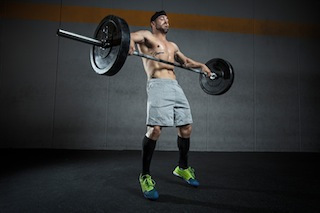 For today’s edition of Dear Mark, we’ve got a three-parter. First up, I explain how alcohol consumption can affect muscle protein synthesis in a competitive weightlifter. Even what seems like a moderate dose can still affect how we recover from our workouts. Second, what should a person do if they really can’t stand standing at work? If the chair is looking really attractive after a morning workout, should we give in to our desire to sit or try to tough it out? The answer may surprise you. And finally, a friend of the blog writes in with a perfect example of a meaningful workout session that I just had to share with you guys.
For today’s edition of Dear Mark, we’ve got a three-parter. First up, I explain how alcohol consumption can affect muscle protein synthesis in a competitive weightlifter. Even what seems like a moderate dose can still affect how we recover from our workouts. Second, what should a person do if they really can’t stand standing at work? If the chair is looking really attractive after a morning workout, should we give in to our desire to sit or try to tough it out? The answer may surprise you. And finally, a friend of the blog writes in with a perfect example of a meaningful workout session that I just had to share with you guys.
Let’s go:
Hi Mark,
I’m a long time PB’er (almost 5 years) and do Olympic Weightlifting. I’ve read your various posts on alcohol and where it fits in for the average person.
Would an active athlete (who trains for competition) need to worry about consuming 2-3 drinks a week on rest days and could it affect protein synthesis?
Cheers,
Rocky
Alcohol can negatively impact protein synthesis in a few ways. First, by disrupting your sleep. Alcohol increases deep sleep and decreases REM; REM sleep is where testosterone peaks, so it’s pretty darn important for optimal muscle protein synthesis. A lot of people self-medicate with alcohol to go to sleep because it makes falling asleep easier. And that’s the thing with alcohol and sleep: even if it feels like you’re sleeping okay after a few, because, hey, you fell asleep in like five minutes, you’re probably still not sleeping as well as you could. It’s sneaky.
Second, alcohol is potentially really bad for the gut. Ethanol directly increases permeability in epithelial cells, for one. And you know how our livers metabolize alcohol into the far more toxic acetaldehyde before breaking down and excreting it completely? Gut bacteria themselves metabolize alcohol into acetaldehyde, which can also cause tight junctions to grow more leaky. If your gut’s leaky, you’re not absorbing all the nutrients you eat – nutrients you need to turn into muscle and support your training and recovery.
Third, alcohol is incredibly dehydrating. Some researchers even attribute the lion’s share of the hangover to extreme dehydration. The worst part of alcohol-induced dehydration is that you’re not just robbing yourself of water. You’re also peeing out tons of electrolytes and other minerals like magnesium, sodium, and potassium that play huge roles in maintaining the hormonal environment necessary for muscle protein synthesis.
Fourth, alcohol taken post workout can directly impair muscle protein synthesis, reducing the rate by almost 40%. That was binge drinking, or a stiff drink taken every thirty minutes. Drinking on a rest day could be less inhibitory than drinking immediately after a workout, but the recovery period continues on throughout the rest day and the potential for impairment exists.
All that said, two to three total drinks spread out through the week on rest days is probably fine. Two to three drinks every rest day might not be a good idea.
Still, you’re a competitive athlete. You might try a month of no alcohol whatsoever – not even on rest days – to see if your performance improves. I suspect it might offer a leg up on the competition. It’s certainly worth a shot. Consider it a personal challenge from me to you, Rocky. Let me know how it goes if you decide to do it.
Hi Mark,
I managed to convince my work to give me a stand up desk – one of the desks that you can raise and lower throughout the day. I was enjoying working up to spending at least half of the day standing up and enjoying all of the benefits of standing. Then I joined a CrossFit style gym and started doing some heavy training including leg weights, often in the early morning before work. Now after about half an hour of standing at work I start to eye my chair enviously and once I give myself an opportunity to sink down, I find that there is no more getting up – my legs just want to rest! Even on the days that I don’t specifically work my legs I find it harder to stand for long periods after a gym session.
So my question is – do you think that I am doing myself a disservice by thrashing myself at gym and then sitting the rest of the day? Or would I be better off with a lighter workout and then standing for at least half the day?
Really appreciate it
Vicki
I used to come down really hard on sitting. It was hard not to with all the evidence coming out against it, especially the research showing that not even exercise can counteract all of the negative effects. But as of late, Vicki, my thinking has evolved on the issue. It’s not that we should avoid sitting altogether. It’s not that we should stand all the time. We should avoid sitting or standing for extended, unbroken lengths of time. Stasis is the problem. Our bodies are not designed to remain immobile through space-time. We need to move.
And I’m not necessarily talking about walking and jumping and lifting things, although that’s important, too. It can be little movements that add up to make the biggest difference.
Fidget. Shift stances. Move. Shuffle your feet. Stand up and stretch, reaching to the sky (or the overhead fluorescent lighting, as the case may be). Squat down to pick up a dropped pen, even if it’s imaginary. Walk to the cooler. Walk to a colleague’s office. Swivel in your chair. If you’re lucky enough to have one of those spinning office chairs, take advantage of it and spin; try both directions.
Here’s a day that’s better than just standing in one place: Stand for twenty, sit for thirty, go walk to get a sip of water, sit some more, stand for awhile, walk to a nearby park to eat lunch, take the stairs on the way back (and a few times more; run a few, too), come back and sit, fidget, stand up a few times, take the stairs to the 7th floor bathroom that no one ever seems to use, and sit/stand/sit for the last few hours. Then you’re done, you’re home, and you don’t feel like a slob because you sat all day or tried to stand before collapsing into a puddle of regret and shame.
And yeah, on a heavy leg day, you might end up sitting more than standing. You might spend way more time sitting than standing or walking. That’s just your body telling you it’s tired and needs to take a load off, and you should probably listen. But you can still do the little stuff I mentioned above.
Whatever you do, just don’t stand still for too long, too often. Don’t stop moving. When we stop moving, we start dying.
This question comes at the perfect time because we’ve got a great new ebook and digital program on the way from Katy Bowman called Don’t Just Sit There that’s going to revolutionize the way you move, sit, stand, and work all day long. It’s changed the way our office works, for the better – and we were already way ahead of the curve with our standing/mobile workstations. I can’t wait to release it. You’re going to love it.
Okay, last one is a quick one.
The other day, my good friend Grant Petersen at Rivendell Bicycle Works emailed me with a great account from a day at the beach:
Hey Mark,
Yesterday I was at the beach, the most beautiful beach I know (McClure’s, in Point Reyes) and as my friend and I were about to hike up the hill out of it (dirt path, loose, narrow, what you get from footpaths to beaches in these parts), he saw a wheel with a truck tire on it. Rim and all, rusty and heavy, and he said, “I wonder how that got here.” It weighed about — well, I have no idea, but it was a grunt to get it vertical and I couldn’t have benched it or pressed it.
We pushed it up the hill for half an hour to a parking lot. I’m pretty sure it would have been there forever if we hadn’t.
Good post, good ideas.
Grant
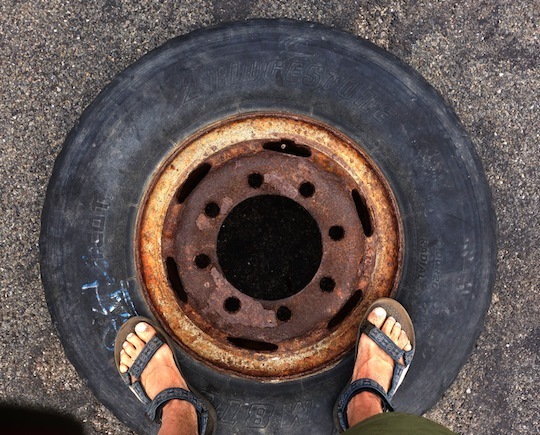


That’s exactly what I’m talking about! You didn’t go to the gym. You saw an eyesore marring your favorite beach – an insanely heavy wheel inside a huge tire – and decided to roll it up a steep hill to remove it. You didn’t go to the gym. You did something useful, something utilitarian, and got a great workout in the process. The task was the workout. It had purpose. Quite literally, it was meaningful.
That’s what we’re all searching for, isn’t it?
Okay, everyone. I’m totally exhausted after a great weekend at PrimalCon Oxnard (which you’ll hear more about tomorrow). It’s time to crash.





September 28, 2014
Weekend Link Love – Edition 315
 Several weeks ago, Leslie Klenke appeared on KCRA in Sacramento to give a Primal cooking demo. This time, she’s showing a group of teens how to exercise Primally. Check it out!
Several weeks ago, Leslie Klenke appeared on KCRA in Sacramento to give a Primal cooking demo. This time, she’s showing a group of teens how to exercise Primally. Check it out!
Research of the Week
All it takes is a millisecond of light to disrupt your circadian rhythm during sleep.
In women, getting 7.6 hours of sleep is linked to fewer sick days. In men, it’s 7.8.
Is there any other pursuit that people willingly engage in and proclaim to be supremely healthy where total body shutdown is highly probable and accepted? I’ve witnessed this happening numerous times in extreme endurance events.
New Primal Blueprint Podcasts
The Primal Blueprint Podcast – Episode #36: Primal Blueprint Expert Certification, Comprehensive Summary – Host Brad Kearns gives listeners a detailed explication of the contents of the Primal Blueprint Expert Certification, including a few sample exam questions.
Each week, select Mark’s Daily Apple blog posts are prepared as Primal Blueprint Podcasts. Need to catch up on reading, but don’t have the time? Prefer to listen to articles while on the go? Check out the new blog post podcasts below, and subscribe to the Primal Blueprint Podcast here so you never miss an episode.
Why Exercise Feels Like a Drag (and What to Do About It)
Artificial Sweeteners May Leave You Absolutely Gutted
The Definitive Guide to the Primal Eating Plan
Interesting Blog Posts
Concerning the vast disparity in quality between hospital cafeterias and Google cafeterias.
Scientists have discovered the “on-off switch” for telomerase. Should we mess with it?
Media, Schmedia
The Obama administration wants to fight antibiotic resistance and recently unveiled its plans to do so. Let’s hope it works.
MDA recently topped the list of top 10 Paleo blogs from Paleo Magazine.
We wanted to extend life, but we may have extended death instead.
Everything Else
Orangutans fish, socialize like rural Saskatchewanians, are totally self-aware, and we’ve cut their numbers down to just 40,000 remaining in the wild.
Would you guys use LeftOverSwap?
Well, I guess that’s one way to maintain work life balance: office desks that disappear into the walls at 6 o’clock sharp.
Chimps who grow up with humans act awkwardly around other chimps.
While I’m sure this would be a great way to combat the perils of sedentary office work, I’m not sure I can handle office workers literally joining the rat race.
Are people better off dying at 75?
Superbugs hitch a ride on farm workers.
Recipe Corner
This is pretty wild: fettucine made entirely out of cheese and egg yolk.
Roast duck with paleo plum turmeric sauce. Make sure you get that skin crispy.
Time Capsule
One year ago (Sept 28 – Oct 4)
A Weekend to Remember: PrimalCon Lake Tahoe 2013 – A short recap of an incredible weekend.
Sausage and Eggs to Go – Sausage and eggs, made to go? Get out of here!
Comment of the Week
Olestra made my microbiome so mad, it pried my anus open.
– Wow. Just. Wow.
Further Your Knowledge. Deepen Your Impact. Become an Expert! Learn More About the Primal Blueprint Expert Certification




September 27, 2014
Hot and Sour Soup
 Hot and sour soup, with its bracing spicy and sour flavor, tastes intuitively like food that will give your immune system a boost. At the very least, it’ll warm your belly and provide a satisfying meal, and with this recipe, no take-out menu is needed.
Hot and sour soup, with its bracing spicy and sour flavor, tastes intuitively like food that will give your immune system a boost. At the very least, it’ll warm your belly and provide a satisfying meal, and with this recipe, no take-out menu is needed.
You can choose to seek out authentic ingredients (like lily buds and cloud ear fungus) or simply go with dried shiitake mushrooms. Likewise, ingredients like soy sauce, sugar and red rice vinegar can be replaced with coconut aminos and plain rice vinegar. This recipe also nixes tofu and cornstarch, resulting in a soup that isn’t traditional but delicious nonetheless.
Once you get cooking, hot and sour soup comes together with surprising ease. Before you know it, you’re slurping up broth that tastes like it should’ve taken hours to make. Fortified with egg and strips of pork loin, hot and sour soup is as filling as it is comforting.
Servings: 4 to 6
Time in the Kitchen: 45 minutes
Ingredients:
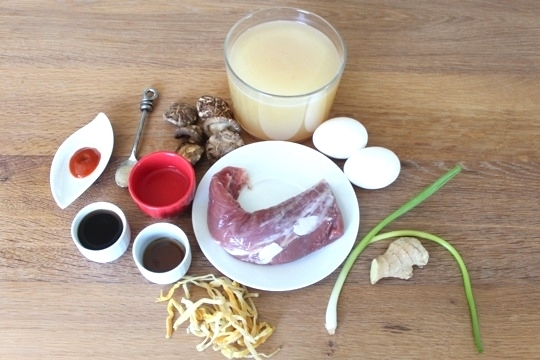
1/2 pound pork tenderloin (230 g)
4 tablespoons coconut aminos, divided (60 ml)
1 tablespoon (15 ml) plus 1 teaspoon (5 ml) sesame oil, divided
2 tablespoons (15 ml) dried fungus* (cloud ear or wood ear) or 6 dried shiitake mushrooms
1/4 cup lily buds* (a small handful)
7 cups chicken stock (1.65 L)
1 tablespoon finely chopped ginger root (20 g)
2 tablespoons unseasoned rice vinegar (30 ml)
1/4 to 1/2 teaspoon white pepper (2.5 ml)
2 eggs, whisked
1 green onion, chopped
Hot chili oil or Sriracha sauce (optional)
*Lily buds (also called golden needles) and dried wood ear or cloud ear fungus give the soup a mysteriously earthy, umami flavor. Both can be sourced from Asian markets or online stores.
Instructions:
Slice the pork into very thin strips 1 to 2 inches long. Marinate at room temperature for 20 minutes in 2 tablespoons coconut aminos and 1 tablespoon sesame oil.
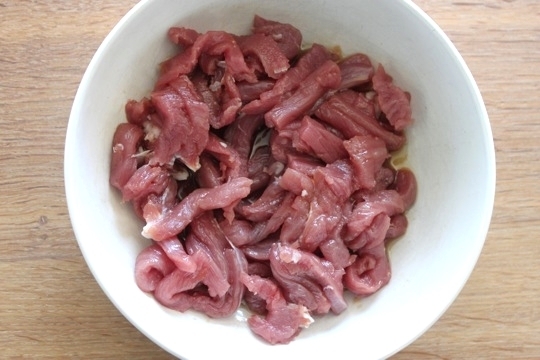
While the pork is marinating, soak the mushrooms and lily buds in separate bowls of warm water for 20 minutes to hydrate. Drain. Cut the mushrooms into thin strips. Cut off the tips of the lily buds, which tend to be chewy.
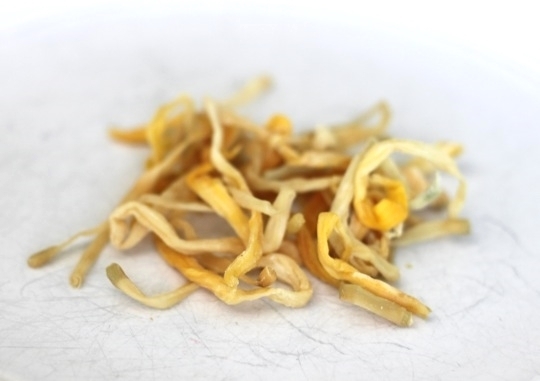
In a large pot, bring the chicken stock to a boil over medium-high heat. Add the mushrooms, lily buds, pork and ginger. Bring the stock back up to a boil and stir in the remaining 2 tablespoons of coconut aminos, 1 teaspoon of sesame oil, the vinegar and white pepper.

Turn the soup down to a gentle simmer. Slowly pour in the whisked eggs while stirring the broth.
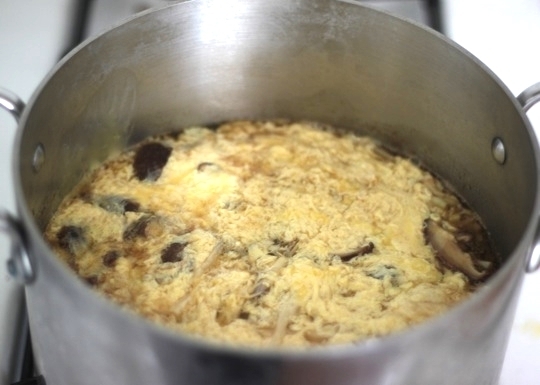
Add the green onion and if desired, chile oil or hot sauce to taste. You can also adjust the flavor by adding more vinegar for a more pronounced sour flavor.

Not Sure What to Eat? Get the Primal Blueprint Meal Plan for Shopping Lists and Recipes Delivered Directly to Your Inbox Each Week




September 26, 2014
Primal Living at Any Age: One Stubborn Senior’s Testimonial
It’s Friday, everyone! And that means another Primal Blueprint Real Life Story from a Mark’s Daily Apple reader. If you have your own success story and would like to share it with me and the Mark’s Daily Apple community please contact me here. I’ll continue to publish these each Friday as long as they keep coming in. Thank you for reading!
 In addition to asking about whether Primal is useful for seniors, MDA members often ask about how to get stubborn senior fathers, grandfathers, husbands, etc. to go Primal. Since I am old (71) and was fairly stubborn when I started Primal, my story may be of interest. (I am sharing what I know from personal experience, but what I have to say may still be relevant if you’re younger and/or female.)
In addition to asking about whether Primal is useful for seniors, MDA members often ask about how to get stubborn senior fathers, grandfathers, husbands, etc. to go Primal. Since I am old (71) and was fairly stubborn when I started Primal, my story may be of interest. (I am sharing what I know from personal experience, but what I have to say may still be relevant if you’re younger and/or female.)
Four years ago, I had been faithfully following most conventional health care wisdom, aside from always refusing statins. However, I had given up gluten many years before. In the past, I had done Atkins, vegetarianism, veganism and Macrobiotics. It was then that Mark spoke to my running group, which I had joined to successfully walk a half marathon. What he said made sense, but I stubbornly refused to completely give up daily white rice, white potatoes, corn tortillas, dairy, or beans. And I sure wasn’t going to fast when there was food available. But I did take some advice.
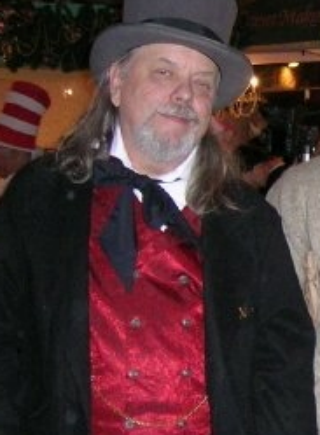 The first picture shows me later that year at a Dickens Faire, still looking like one of Scrooge’s ghosts. I had seen some health improvements, but my waist was 46 inches. (I wasn’t weighing myself because I had read in MDA forums to “throw away my scale.”) I gradually became more and more Primal. So how did that work out?
The first picture shows me later that year at a Dickens Faire, still looking like one of Scrooge’s ghosts. I had seen some health improvements, but my waist was 46 inches. (I wasn’t weighing myself because I had read in MDA forums to “throw away my scale.”) I gradually became more and more Primal. So how did that work out?
Last year, I had what may have been a transient ischemic attack (TIA). This year, I had ventricular tachycardia. I have a pacemaker/implantable cardioverter defibrillator (ICD), hearing aids, arthritis and type 2 diabetes.
So, is this a success story or not? It is, in fact, a great success story in my opinion. After the TIA, or whatever it was, my neurology improved greatly—no more senior moments, which had been very frequent. My handwriting and printing are better than any time since perhaps 8th grade. I have a greatly improved reaction time, better coordination and balance, and I don’t bump into things anymore. It seems like my brain was just rewiring itself. I credit Primal, although I have no proof.
As for the attack of ventricular tachycardia, I had no chest pain, dizziness, nausea, etc.—just a very fast, irregular heartbeat, so I called 911. The ambulance took me to an ER, where they zapped me. There was no apparent damage. Again, I credit Primal. The cause of the attack goes back to an angina attack eleven years ago that damaged the ventricle. The docs said at that time that I had congestive heart failure. Primal is not to blame for it and no doubt has helped me live longer than statistics say I should have lived (5-10 years). I do vigorous aerobics and water aerobics. I’m not even sure I needed the pacemaker/ICD. That was mostly for the peace of mind of my family.
I also didn’t absolutely have to get hearing aids, but they let me hear birds and people with high, soft voices, like my grandson. Losing weight through Primal improved my low and mid-range hearing, which is now normal. I lost fat in my ear canals.
Although I do have some arthritis, it seems to have gotten better. It’s mainly in my feet (too many decades of them being in little coffins—i.e. shoes—to heal quickly), hands (old injuries and still too many hours at the keyboard) and neck/shoulders. I’ve tried the standard Primal suggestions, including avoiding nightshades. The latter didn’t seem to matter, and I am not giving them up permanently unless they make a big difference.
My biggest challenge now is the diabetes. My glucose was well controlled by Metformin and diet for the first seven years after being diagnosed. Earlier this year, however, it shot up; probably because of antibiotics I had to take and going too heavy on healthy fats. It was a vicious circle: as my glucose went up, I consumed fewer and fewer carbs, but more and more fat. Wrong! Both increased insulin resistance. I am still working on finding the right levels and types of fat and carbs, and getting enough exercise.
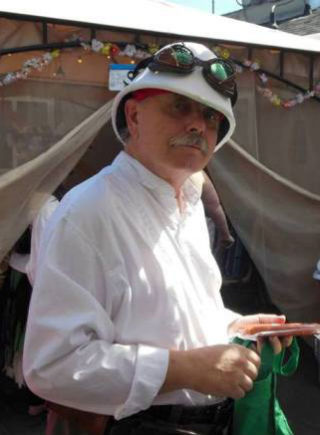 Remember that top hat in the first picture? Unless I pad the sweat band, it falls down over my eyes. The coat makes me feel like I am wearing a tent. My pants are now a loose 40 slim instead of 46 baggy. I’m hoping to reach 38 soon. Every part of my body is healthier. The second photo is me now at a steampunk event.
Remember that top hat in the first picture? Unless I pad the sweat band, it falls down over my eyes. The coat makes me feel like I am wearing a tent. My pants are now a loose 40 slim instead of 46 baggy. I’m hoping to reach 38 soon. Every part of my body is healthier. The second photo is me now at a steampunk event.
To me, the improvement in my mental health has been just as dramatic. I have already mentioned the neurological changes. I am self-diagnosed as having been borderline Asperger’s Syndrome most of my life before Primal. Four years ago, the thought of looking at someone’s face made me scream inside and want to run away. Now I enjoy it. I’m sure I have also been bipolar throughout my life—not just including depression, but also manic periods, which included many inappropriate actions. That seems to be gone. I credit Primal.
Ironically, after starting out so stubbornly, I now am about 95% Primal. Of course, Primal/Paleo thinking about white rice, white potatoes and legumes has changed. But I rarely eat white rice. I go easy on potatoes and often have them prepared to increase resistant starch. I only eat traditionally soaked beans, but I do eat them several times a week. I still eat (organic) corn tortillas, but only a couple about once a week instead of a couple per day. Dairy is mostly a condiment rather than one of my primary food groups. Nut butter is probably my greatest weakness. But I have replaced peanut butter with almond and cashew butters. I probably eat a bit too much of them, but it is an improvement.
If Mark had given a strict Paleo talk when I heard him speak to my running group, I would have dismissed the whole movement and not gotten all these benefits. I am only Paleo because of Mark’s real world approach. If you are trying to get an old coot like me to go Primal, don’t assume you have to get him to do it 95% correctly–not immediately or even ever. As Mark says, 80% is enough to get the benefits. Don’t keep saying, “But…but…but….” Would I be even healthier if I had gone strict Paleo four years ago? The question is meaningless. For me, it was gradual or not at all.
Do not say, “Pretty soon you will think bread, pasta, potatoes, rice, etc. are tasteless, disgusting crap.” My feelings toward all of those foods are completely unchanged. I love them, even plain, gluten-free ones. I just know I need to avoid or go easy on them. I also have a pet peeve: do not talk about cauliflower “rice” or cauliflower “mashed potatoes.” For someone like me, to whom these are comfort foods, it just sounds stupid. Even if it’s cut up to look like rice, call cauliflower what is: cauliflower (or even “riced” cauliflower). Also, try other Paleo alternative foods that strict followers don’t like.
Observe how Mark Sisson goes about promoting primal: He does so without rants, but with a sense of humor, reasonableness, and a forgiveness of human nature. Do likewise when trying to reach others about Paleo.
If you want to nab a Primal convert, catch the old non-Paleo coot when he is receptive, like when he is having his fifth cold this year (you can mention that you never get them anymore). Focus on the key tenets of primal: eliminating junk foods, sugar, seed oils and wheat. Also, remind them to get enough vitamin D and become more physically active. I have more thoughts on my website.
No matter what you try, failure is a possibility. But failure is certain if you nag or do a shrill strict Paleo rant.
Harry





September 25, 2014
How to Succeed with a Growth Mindset
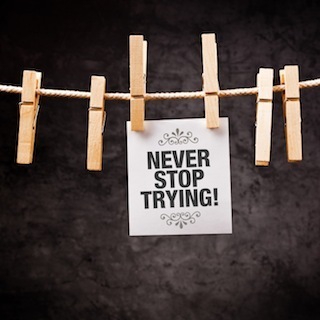 A couple decades ago a Stanford University psychologist by the name of Carol Dweck became famous when she suggested parents praise their children’s efforts instead of compliment them on their “inherent” intelligence (“Joey, you’re such a smart boy! “Suzy, how’s Mama’s smart girl?”). The descriptive accolades telling kids how intelligent they are, her research demonstrated, actually undermined children’s self-confidence and willingness to venture new tasks or unfamiliar material. On the opposite side of the spectrum, acknowledgement of children’s engagement and perseverance resulted in their aiming for bigger challenges.
A couple decades ago a Stanford University psychologist by the name of Carol Dweck became famous when she suggested parents praise their children’s efforts instead of compliment them on their “inherent” intelligence (“Joey, you’re such a smart boy! “Suzy, how’s Mama’s smart girl?”). The descriptive accolades telling kids how intelligent they are, her research demonstrated, actually undermined children’s self-confidence and willingness to venture new tasks or unfamiliar material. On the opposite side of the spectrum, acknowledgement of children’s engagement and perseverance resulted in their aiming for bigger challenges.
The research, Dweck claimed, identified what she called a differentiation of “mindset.” When we’re operating from a “fixed” mindset, for example, we believe our talents and abilities are somehow set or predetermined. We’re either innately good at something or we’re not. When we accept a “growth mindset,” however, we view achievement through the lens of effort. We believe we have the power to develop our skills regardless of initial capacity. Clearly, we grown-ups can glean something essential from this concept. What could a “growth mindset” do for our health endeavors? For losing weight? For becoming fit? For changing our eating habits? For our happiness and success in general? And how would it change our self-talk and motivational strategy?
Let’s look back at the original research for a minute. Dweck’s much noted study examined the responses of two groups of fifth graders – one whose participants were told “You must be very smart at this” after completing a puzzle and another who heard “You must have worked really hard.” When each of the children in both groups were then offered the chance to do a similarly easy or more difficult puzzle, some 90% of the “hard workers” chose the more challenging option. The smarties? Most of them chose the easy one.
When the story circulated in the media, parents everywhere recognized their near-universal guilt. Some likely panicked, wondering if they’d doomed their children for all eternity. (Such is the crazy-making of modern parenting mentality.) The truth is, however, Professor Dweck’s findings turned instinct on its ear – and not just parenting instinct. After all, who doesn’t want to be told he/she is smart? Or athletic? Or a great this-or-that? We want this, yes, but the scientific truth is we don’t do well with it.
Because for us, as for those fifth-graders, we can get sucked into the expectation of the label. If people think we’re so great now, we suddenly fear losing that good perception – or our own positive self-image. We’ve given too much power to that identity, and we can’t risk the loss by challenging ourselves beyond what we know we do well. By the same token, if we’ve been overweight and inactive for much of our lives, we’ve perhaps come to identify with self-limiting beliefs about subpar genes or behavior patterns and feel we’re already set up for failure. Why bother? In both cases, a more productive mindset would be focused on our striving itself – not the outcome of each venture.
So, back to what works for us. We do well with affirmation of our effort. We do well with validation of all the hard work we put in. We do well with encouragement and support for attempting a specific challenge to begin with and for giving it our best shot. It takes our mind off of the outcome. In fact, it helps us detach from it and keeps us from identifying with it. It frees us up to play and define ourselves as “in process.”
This can be fun and messy and even embarrassing at times. Though it can sting to think of it, the truth is inevitable. We grow by stretching – and often (very often) by failing. A physical muscle’s growth is spurred by a well-targeted amount of damage. Our cognitive ability grows by mixing it up with questions that initially baffle us. We grow emotionally by encountering and weathering experiences that leave us flattened. The promise behind these various challenges is we bounce back with more strength, know-how, wisdom and resilience.
In the face of this stretching, a growth mindset imparts continual optimism and simultaneous humility. If you’ve been told you “just weren’t blessed” with the body of an athlete, a growth mindset will dismiss that judgment. If you have been told you were blessed with an athlete’s body, a growth mindset will discount that as well. You’ll recognize that it might confer certain advantages, but the end result is going to have very little to do with your genetics and everything to do with your exertion. The central truth is we’re defined by our action and not our impression.
Professor Dweck aptly highlights author Benjamin R. Barber’s quote, “I divide the world into learners and non-learners.” That says it right there, and it’s as applicable to a Primal journey as it is a fifth-grade classroom. Are we willing to be a learners? I venture the question because adopting a growth mindset doesn’t just suggest those without obvious innate talent can work their way toward achievement, but it also implies that none of us are ever off the hook no matter how “healthy” we think we are. No living off of other people’s perceptions or, for that matter, self-image. No resting on laurels. A growth mindset isn’t satisfied with any certain reputation or accomplishment. The fact is, for all of us there is always the next hill to conquer. Imagine the person who says “I’m done. I’ve done enough.” You don’t want to be this person. In fact, I wouldn’t even suggest having coffee with this person.
To me, it’s exciting that nothing is truly off limits to me at any point in my life. I give myself permission to grab at new experiences – and fail at them miserably. (My wife can tell you plenty of stories….) Because I’m not trying to uphold any assumption about myself or my skills, I’m free to do whatever I want and see how far I can go – with everything from parkour to heliskiing. We can endeavor more no matter where we’re at in life or what our health, physical condition or life circumstances.
Growth mindset prompts us to let go of limitations. We learn to bypass old scripts that tell us we’re too old, we’re too slow, we’re not cut out for a, b or c or we’re genetically destined to be x, y or z. Again, a growth mindset isn’t in it for the outcome. It’s focused on the process. The affirmation is in the undertaking.
Adopting a growth mindset on some level entails exploring those self-beliefs that influence our thinking and action. What messages are driving the bus each day? Don’t underestimate simple awareness. Upending negative self-talk, after all, isn’t an easy or quick fix process. Even if we get up the motivation to start going to the gym or to begin eating better, how many times are we beset by guilt that we haven’t accomplished this before? Notice and then let go of the neurotic, nagging and defeating voice that says you should already be where you want to go.
Right there is a major and unappreciated point. We so often torture ourselves over feeling like we should be where we want to go: what we should look like, what we should run like, what we should eat like, etc. (At a certain point in life you give up on the shoulds.) We give ourselves a hard time for not being at the end vision we’re reaching for, which only makes it harder to conjure the self-affirmation to go after that vision. Should we call that ironic or just insane? How many times does this twisted cul-de-sac thinking keep us from even starting our pursuit – whether it’s for health, for fitness, for a better career, for a more adventurous or more balanced life – because we shame ourselves for being so far from our goal. For example, I’m going to beat myself up about being out of shape to such a degree that I won’t have basic confidence to walk into a gym. When we feel shame about a certain trait, it only deepens our identification with it. Talk about cutting ourselves off at the knees…
What if instead we set out to consciously affirm and encourage our own efforts at every turn – letting go of all personal descriptors focused on talents? What if we dropped our (or other people’s) old stories about ourselves? What if we all but ignored outcomes? What would it mean for how much we enjoyed life, how much we risked, how much we were willing to push ourselves toward bigger challenges?
So, what do we do here? How do we actually turn this around? How do we go about cultivating a growth mindset? I think the obvious answer is invest in it. After all, think about how much you’ve invested all these years in a “fixed” definition of yourself and your abilities?
Investing in a growth mindset means literally practicing the belief that we can try our hand at whatever we like and at any level we’re willing to venture and work toward. Yup. Put into practice. Again and again. There’s no magic switch that flips us from fixed to growth as nice as that would be. We write over the old scripts and affirm the new continuously. Over time, they become our new default thinking.
Sure, it would be great to get encouragement like those lucky fifth-graders in the “growth” group. That said, there’s nothing keeping us from applying this principle to the messages we tell ourselves and the support we put in place for ourselves every day.
Live your efforts out loud. Show them off. Do that workout “check in” on Facebook. Yes, they can be annoying, but do it with humor or with style. Start an Instagram account with all the awesome recipes and changes you’re making. Get your share of fans and followers. Join or start a group or class. Hire a coach. The fact is, these support people aren’t just there to push you. Most people, in my experience, want a witness to their experience and efforts – someone who sees and appreciates all that’s gone into their process, someone who can mirror back to them what they’ve accomplished when they can’t see it.
Likewise, invest in your own feedback and mirroring. Record your ventures with journals and photo evidence. No feat is too small. Track your effort and risk taking. Celebrate it – the successes and failures. Make pictorial collages. Throw parties. Make your own blog or Facebook page around this new approach to life. Just as you can invest in the inward reframing of self-talk toward effort and daring, you can invest in the outward visibility of your efforts and the fun they can be. When we stop identifying with the performance expectation or outcome, we can chalk it all up to Primal exploration – and even adventure. Grok would be proud.
Thanks for reading today, everyone. What are you thoughts on fixed and growth mindset, and how have these principles shown up in your thinking? Have you changed over time in this regard? Have a great end to your week.
Further Your Knowledge. Deepen Your Impact. Become an Expert! Learn More About the Primal Blueprint Expert Certification




September 24, 2014
Why Exercise Feels Like a Drag (and What to Do About It)
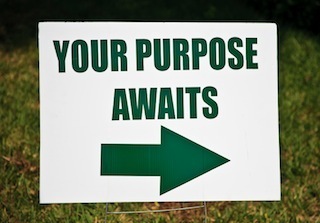 Sometimes while working out at home I catch Buddha (my lab) just kind of watching me doing squats or pushups or pullups or burpees with this look on his face that says, “You feed me, walk me, scratch me, and water me and I love you for it, but what in Dog’s name are you doing?” He probably thinks I’m insane. You can’t really blame the guy. I mean, the stuff we do for exercise is pretty silly:
Sometimes while working out at home I catch Buddha (my lab) just kind of watching me doing squats or pushups or pullups or burpees with this look on his face that says, “You feed me, walk me, scratch me, and water me and I love you for it, but what in Dog’s name are you doing?” He probably thinks I’m insane. You can’t really blame the guy. I mean, the stuff we do for exercise is pretty silly:
You’re walking on a treadmill, literally going nowhere for miles at a time.
You’re pedaling like a madman, but instead of seeing the landscape unfold in front of you, you’re watching MSNBC with closed captioning on.
You’re picking up a metal bar with weights on either end and putting it back down over and over again.
Hanging from an overhead bar, you pull yourself up toward it until your chest touches, then go back down and repeat it several dozen times.
Is it any wonder that many people find modern exercise to be meaningless?
Now, not everyone finds it meaningless. I’m a man who prefers a rousing game of Ultimate or a hike through the canyons of Malibu, but I can also appreciate a good strength training workout in the gym and an intense sprint session on the stationary bike. But a lot of people just aren’t moved by conventional workouts. And I think a big reason is that physical movement has become separated from immediate utility. We no longer have to walk, lift things, run, climb, or carry heavy objects to make our living, procure food, or get from here to there. Instead, we work out for promised, basically intangible benefits far off in the distance. If you can’t find immediate value in the exercises, you’re unlikely to do them.
But we do need to exercise. I’d love it if we could all simply incorporate regular movement into our everyday life, and mobile workstations, walking breaks, taking the stairs instead of the elevator, walking meetings, and short workouts in the office are bridging the gap, but formal workouts are still important – and I’d argue necessary – for health, strength, and fitness.
So what’s a person to do? How can we reinstill meaning and purpose into our daily activity and thus make it feel less like of a drag.
Start active commuting.
Ride your bike to work. Skateboard to work. Or how about rollerblading? Even hopping on one of those goofy recumbent bikes to bypass traffic is a good choice. Whatever the mode, research shows that active commuting is great for psychological and cardiovascular well-being. When compared to passive commuters (either train, bus, or car), active commuters are happier (PDF) and less likely to develop heart issues. They’re also, unsurprisingly, fitter.
Some people just can’t do it. If your commute is 60 miles each way, I don’t expect you to hop on the road bike every morning. If you’re 15 miles away, you’re not going to walk. But there are ways around it. You can always park a mile away from the office and walk the last fifteen minutes. Even those long distance commuters might be able to squeeze the occasional long ride in once a week or two, just to shake things up.
Do physical labor.
Maybe you’re looking for work but haven’t found anything in awhile. Or maybe you’re a student off for summer just kind of milling around in your hometown. If you need work, why not try physical labor? Do yard work, lay bricks, bust up concrete, be a farmhand or a fruit picker. You can even travel and become a WWOOFer (worldwide opportunities on organic farms – volunteer farm worker). All you need is a plane ticket somewhere and you can live, work, get really fit, and enjoy excellent organic produce in such locales as Hawaii, Costa Rica, Chile, Belize, Spain, Hungary, and over 100 other countries around the world.
If you usually hire people to do you yard work, start doing it yourself instead. It really doesn’t take that long, and it’s a fantastic workout. Physical labor makes you fit, just so long as you don’t drown your sorrows in drink and junk food.
Go into construction work.
The strength of construction workers is almost unparalleled (both old man strength and farm strength are in the running). They may not always eat the best food or do “cardio” or think much about their health, but those dudes (and ladies, as the case may be) are some of the pound for pound strongest people around. Best of all, it’s functional strength because it was strength developed by doing things in the real world. Construction work also tends to build grip strength better than any dedicated grip-strengthening exercise, so you’ll be ready to lift heavy things when you get back into the gym.
An ancillary benefit is that you’ll learn helpful new skills. Being able to build things with your hands is an important ability that will be extremely valuable when the rage virus epidemic hits and society crumbles around us.
Or if you’ve already got a job you like, pick up some carpentry skills on the side and work on some projects when you have free time. Build a tiny house. Demo that weird shed that’s been sitting in your backyard since you bought the place. Build a treehouse, or a home gym. There are some good online carpentry resources, but depending on how you like to learn the best bet may be to take a class at the local community college.
Do a charity event that you believe in.
There are charity fitness events every weekend, nearly everywhere. 10ks, walkathons, 5ks, what have you. You may not believe in every cause. You might find some superfluous. But everyone has at least one cause – a disease or a displaced people or an endangered species or a beleaguered nature preserve – they care about. And each one of those causes probably has a charity fitness event that you can participate in.
Whereas going for a run might sound like torture if it’s just to obtain the purported fitness benefits, going for a run to raise money for research into a cure for Alzheimer’s might feel more worthwhile. I find that Googling “[disease/condition/cause] charity run [your location]” usually produces some good leads. If you can’t find a local event, you may be able to be a “remote runner.” Just message the event organizers and see if you can’t participate from afar.
Plus, you could always just organize your own event. It doesn’t have to be a grandiose endeavor. You don’t have to solve world peace or save the Siberian tiger. How about raising money to feed local homeless (even if it’s just a few people) or help them start a farm? Start small.
Do nature clean up.
Whether it’s beach clean-up, forest clean-up, desert clean-up, roadside clean-up, or park clean-up, just go help clean up nature. Cleaning up natural areas is hard work. It involves a lot of kneeling, bending, squatting, and lifting, so be sure to practice excellent movement quality. Bend at and lift with the hips, not the lower back. Practice that Grok squat. You can even throw in some lunges, Grok crawls, and other bodyweight movements as you clean to increase the intensity.
But most importantly, cleaning up nature, well, cleans up nature. That’s where we come from, and we need to respect it and care for it. It’s still what feels like home. It is home. I don’t care which side of the environmental spectrum you fall on. Plastic bags, food wrappers, dirty diapers, and other bits of assorted human waste and garbage do not belong in natural environments. We can all agree on that, I hope (you’re not Don Draper, are you?).
As with charity events, you can find clean-up events easily by Googling “[beach/forest/park/desert/road/environment] clean-up [your location].”
Don’t shy away from helping friends move, renovate, or tackle big jobs around the house.
Instead of making up an excuse next time a buddy asks you to help move apartments or houses, go help. Moving large, bulky, heavy furniture through doorways, around corners, and up and down stairs is a test of brains and brawn. It requires – and develops – great strength, but it also forces you to coordinate with your carrying partner and plan your approach. Between tenuous grips and oddly shaped “weights,” these definitely aren’t perfectly balanced barbells. Even something as straightforward as loading up several dozen boxes of books into a moving van is an incredibly taxing workout.
Being the friend who’s always willing to help others move to a new apartment also gets you an important perk: they’ll help you when you need to move.
I’ll admit it. Making our workouts useful, utilitarian, and objectively meaningful isn’t easy. It’ll take effort and creativity. And it might take more time than we’d like, especially when we could just hire some guys for a few bucks to handle our yard work, donate to a charity instead of participating in a charity fitness event, and pay movers. But if you find conventional exercise to be meaningless, maybe a little inconvenience is just what you need.
Let’s hear from you guys. What objectively meaningful, useful, and utilitarian workout methods can you think of?
Thanks for reading!





September 23, 2014
Artificial Sweeteners May Leave You Absolutely Gutted
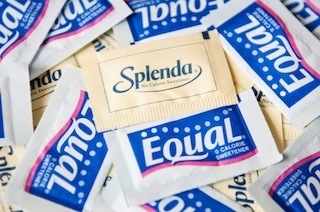 Several years ago, I covered the popular artificial sweeteners sucralose, acesulfame-k, aspartame, and saccharin, finding mixed results and little to confirm the widely-held view that they provoke an insulin response. I also wrote about diet soda in general, coming out generally against them while acknowledging the lack of hard evidence either way. But artificial sweeteners may be interfering with our metabolic response to food by an entirely different avenue: the gut biome. According to a new study (PDF) that has nothing at all to do with the cephalic-phase insulin response, artificial sweeteners induce glucose intolerance by altering the composition of our gut microbiota.
Several years ago, I covered the popular artificial sweeteners sucralose, acesulfame-k, aspartame, and saccharin, finding mixed results and little to confirm the widely-held view that they provoke an insulin response. I also wrote about diet soda in general, coming out generally against them while acknowledging the lack of hard evidence either way. But artificial sweeteners may be interfering with our metabolic response to food by an entirely different avenue: the gut biome. According to a new study (PDF) that has nothing at all to do with the cephalic-phase insulin response, artificial sweeteners induce glucose intolerance by altering the composition of our gut microbiota.
There were a few different stages to the study:
1. In mice, adding any of the artificial sweeteners (AS) – the researchers tried saccharin, sucralose, and aspartame – to their drinking water for ten weeks induced glucose intolerance. Mice in the water, water + sucrose, or water + glucose control groups all maintained normal glucose tolerance over the same period. The changes were sweetener-specific, with saccharin having the most pronounced effect.
2. Given previous studies showing alterations to the gut biome with AS consumption, the researchers wondered if these changes were involved with the glucose intolerance. They dosed the mice with various antibiotics. If changes to the gut bacteria were causing or involved with the glucose intolerance, eliminating the bacteria should have an effect. It did; antibiotic treatment abolished the glucose intolerance.
3. To confirm that the microbiota alterations were causing (and not simply associated with) the glucose intolerance, researchers performed fecal transplantations, transferring the gut biome from AS-consuming mice or glucose-consuming control mice into germ-free mice on a regular chow diet. Mice who received a transplant from the AS group developed glucose intolerance; mice receiving a transplant from the control group did not. It was settled, then. Saccharin-induced changes to the microbiota were causing the glucose intolerance.
4. The researchers then examined the specific alterations to the gut bacteria of AS mice, finding many similarities to gut bacteria trends in humans with type 2 diabetes.
I hear the cries already: “Ah, but those are just mice, Sisson. I ain’t no mouse and I only have one diet soda a day! Okay, maybe two.” Valid points. Luckily, the study also had a human component.
The last part of the study dealt with human subjects. The participant cohort was non-diabetic, 44% male, and 56% female. Each participant filled out a food frequency questionnaire and underwent various clinical tests to measure glucose tolerance, body weight, waist size, and other indices of metabolic health. Then, researchers scoured the results for connections between artificial sweetener intake (from diet drinks and other sugar-free substitute foods) and metabolic health markers. As it turns out, there were associations between AS intake and increased waist-to-hip ratio (a marker of central obesity), higher body weight, greater glucose intolerance after an oral challenge, higher fasting glucose, and elevated liver enzymes (which might indicate non-alcoholic fatty liver). And when they compared a subgroup of people who ate the most AS to people who ate none at all, the differences were exaggerated.
Okay, but it says it right there: people who ate the most AS were also the fattest. Couldn’t it be reverse causation? In other words: Overweight/obese people are more likely to use artificial sweeteners in an attempt to lose weight. They were already unhealthy and near diabetic to begin with; the AS are just along for the ride. AS consumption could just be a symptom of the obesity and metabolic syndrome. The researchers planned for that, actually, controlling for body weight and finding that the “increase remained significant.”
The researchers then chose a group of participants at random and analyzed their gut bacteria populations. They found that AS consumption in humans predicted certain shifts in the gut biota, similar to the changes seen in AS mice. And when body weight was controlled, the associations remained.
Later, they actually placed seven healthy volunteers who were not habitual AS consumers on a week-long diet containing the FDA’s maximal acceptable daily intake of saccharin. Oral glucose tolerance tests were given before and after the experiment. In 4 of 7 subjects, glucose intolerance worsened after the AS diet; the other three didn’t get worse, but they didn’t improve either.
This isn’t the first paper to show AS-induced disturbances of carbohydrate metabolism. It’s not even the first one to explore the effect of AS on the gut biome. Let’s take a look at some of older evidence supporting this most recent study’s findings.
First off, artificial sweeteners make it through the gut mostly unperturbed. The majority of ingested sucralose, for example, shows up in the toilet, meaning your gut bugs will encounter any Splenda you consume. If artificial sweeteners are going to affect your microbiota, the two have to meet.
Second, there’s a wealth of epidemiological evidence linking type 2 diabetes and artificial sweeteners. One study found that daily consumption of diet soda was associated with a 36% greater relative risk of metabolic syndrome and a 67% relative risk of type 2 diabetes. The San Antonio Heart study noted strong associations between diet soda intake and body weight, with the latter increasing in step with the former. And among middle-aged Japanese men, regular consumption of diet soda was linked to a significant increase in type 2 diabetes. Plus, overweight people who drink diet sodas consistently eat more total food/calories than overweight people who drink regular sodas. If the results of this study hold out, those links may be causal, not just correlative.
Third, other studies have found that artificial sweetener consumption can affect the metabolic response to subsequently eating food with actual calories. One small study looked at the effect of sucralose consumption on glucose metabolism in obese patients who don’t have diabetes and don’t use artificial sweeteners on a regular basis. They either drank water or sucralose mixed into water, then drank a glucose solution. If a patient drank sucralose, they released more insulin and their blood glucose spiked higher in response to the glucose drink than patients who drank water. Moreover, sucralose caused insulin to stay elevated longer than water.
Fourth, we’ve known for awhile that artificial sweeteners can affect the gut biome. A famous 2008 paper found that 12 weeks of sucralose had negative effects on the gut bacteria in male rats, including reduced beneficial bacteria, increased fecal pH, and inhibition of pharmaceutical bioavailability.
While the science is far from settled, I think there’s enough that we can start making some decisions about whether or not to consume artificial sweeteners. And this is sweet (pun absolutely intended) vindication for all the people who’ve reported gaining weight or binging or seeing higher postprandial blood glucose spikes after incorporating artificial sweeteners only to be ridiculed for their “anti-scientific beliefs,” their delusions and their conspiracy theories.
Researchers are finally teasing out what many of you have known all along: individuals have individual reactions to artificial sweeteners. What’s good for the lean, CrossFitting goose may not work for the pre-diabetic gander. And it’s probably our highly individualized gut biomes that determine our highly individualized responses to artificial sweeteners.
Lab mice are a homogenous bunch. They live in the same environments, eat the same foods, feel the same stressors, and presumably have very similar gut biota profiles. Everything is controlled. If a dietary change has an effect, it’ll happen across the board. Humans are a bit rangier. We lead different lives from one another. We eat different foods, have different personal and medical histories, carry different microbial auras, and house different microbial populations in our guts. Some of us – and our bacteria – will respond poorly to artificial sweeteners. Some won’t notice a thing. Some will even lose weight.
But if you’re one of the people to respond poorly, if your postprandial blood sugar is getting worse even though the “science” says it’s impossible, you’re not crazy. And you’re not alone.
There’s more to come on this topic. This study was just a preliminary taste, albeit an important one. Stay tuned.
Let’s hear from you guys. What’s been your experience with artificial sweeteners and glucose tolerance?





Mark Sisson's Blog
- Mark Sisson's profile
- 199 followers



